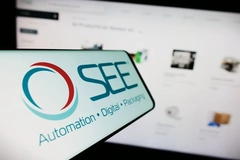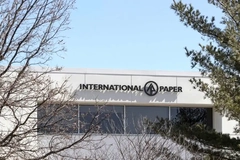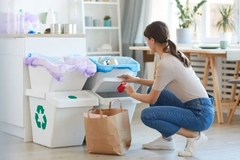Labeling clarity: Meeting consumer and regulatory demands for transparency with latest R&D

05 Jun 2024 --- Consumers increasingly expect clear product labels to improve disposal behavior. A new study titled “Enabling desired disposal of compostable plastic packaging: an evaluation of disposal instruction labels,” finds that participants preferred “clarity and directness” in the disposal instructions logo denoting compostability.
The research evaluated a series of disposal instruction labels for their effectiveness in enabling the desired disposal of compostable plastic packaging.
Clear direct disposal instruction wording can help enable the appropriate disposal behaviors, assert the researchers.
The depiction of “simple yet unambiguous and instructive” symbols was valued and likely to be the better instigators of behavior change than associative symbols.
The findings have implications for government policies and industry practices around labeling compostable plastics, stress the scientists. To direct items into food waste, they suggest that explicitly mentioning food waste in a disposal instruction is “likely to be effective.”
To direct items to general waste, “do not recycle” might work for some packaging formats. But the researchers assert it is likely that a clearer, directive disposal instruction — for example, “dispose of with general waste” — may be more effective.
Clear direct disposal instruction wording can help enable the appropriate disposal behaviors, finds new research.A different study also recently found that tea bags manufactured using plastic alternatives might not biodegrade and could harm terrestrial species. The study’s authors highlighted the need for accurate disposal information to be displayed on product packaging, differentiating between industrial and home compostability.
Tag innovations
In recent innovations driving forward label clarity, recycling technology company and connected packaging solutions provider Polytag announced UK retailer M&S as a founding member of its Polytag Ecotrace Programme, an initiative to optimize the tracing and recycling of single-use plastic packaging in the UK.
The program deploys a wide network of Polytag’s Invisible UV Tag detection equipment in strategically chosen recycling centers that handle high volumes of waste.
Polytag’s Invisible UV Tags are printed onto labels at production. Once the packaging item enters the recycling stream at a recycling center, a Polytag UV Tag Reader identifies the Invisible UV Tag. Detecting materials allows for accurate sorting and cleaner feedstock for UK-sourced recycled PET packaging materials.
Commenting on the Polytag Ecotrace Programme, Alice Rackley, CEO of Polytag, said: “Currently, FMCG brands have no visibility of what happens to its single-use plastic once it has been put in the bin. As extended producer responsibility legislation comes into force, brands will need to take responsibility for packaging materials.”
“Not only does our Ecotrace Programme aim to solve this problem by bringing together leading players across the UK to capture barcode-level information on single-use plastic, but it stands as an example of what passion and collaboration paired with tangible action can do,” she says.
Slashing packaging waste
Earlier this year, we spoke with Rackley about how digital deposit return schemes are integral to a circular packaging economy.
We discussed how the company’s technologies will be a part of a wider connected packaging future that aids recycling rates, waste avoidance and accurate business reporting. Rackley highlighted that drink manufacturers and brands now need to invest in unique, every-time QR codes on their labels, which are ready for consumers to scan from the comfort of their homes, and claim the rewards.Brands now need to invest in QR codes on their labels, which are ready for consumers to scan from their homes, asserts Rackley.
In another approach to reduce waste, UK supermarket Tesco now plans to remove plastic stickers on its extra-large avocados The company will use laser technology to engrave avocados with information such as size and variety.
The new labeling system will include removing a small section of the fruit’s skin to etch the details. Westfalia Fruit assures that the process will not affect the avocado’s quality and shelf life.
Connected labels
Digital IoT agency SharpEnd released its second “Connected Experience Report” last month, examining how the industry is adopting and responding to developments in connected technologies like QR Codes, near-field communication and augmented reality.
The report showed that roughly 85% of brands plan to increase their investments in connected technologies in the next 12 months. In the US, this includes 89% of alcoholic beverage producer respondents, 84% of respondents from the consumer packaged goods sector and 75% from pharmaceutical and healthcare.
“This is a growing market that requires all parts of the supply chain to step up and make sure they are ready to play their part in helping their clients to take advantage of the opportunity. Those that do will reap the benefits,” said SharpEnd founder and CEO Cameron Worth.
By Natalie Schwertheim











